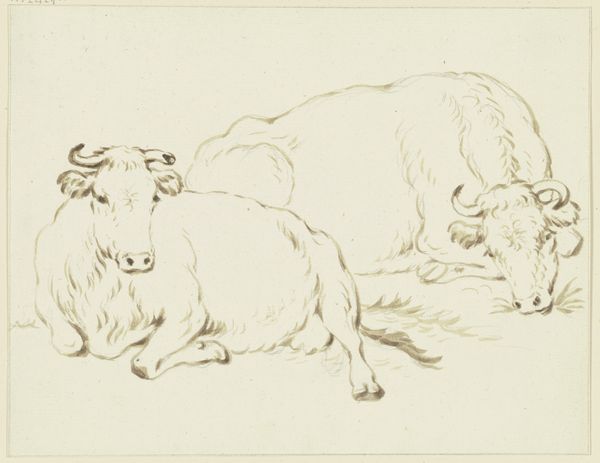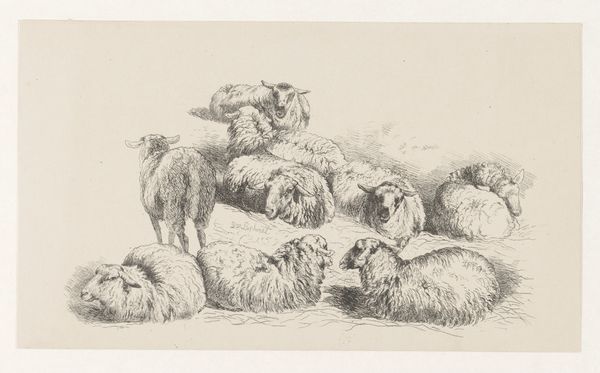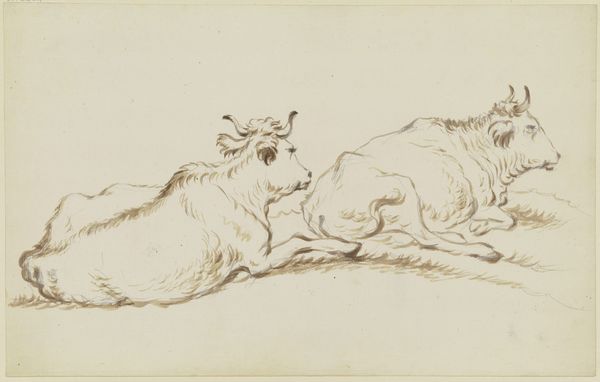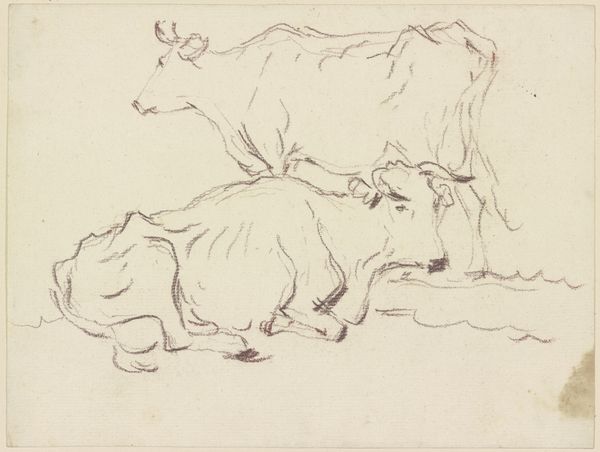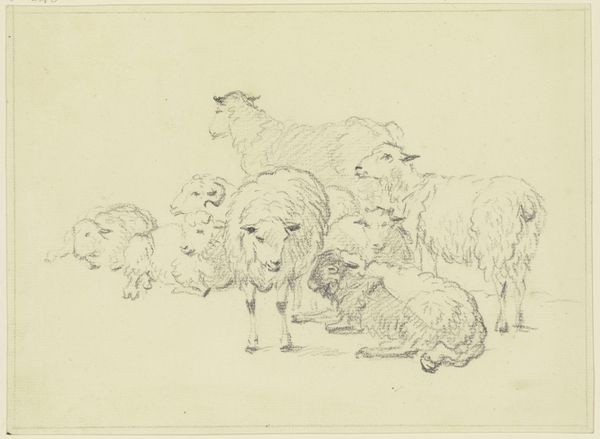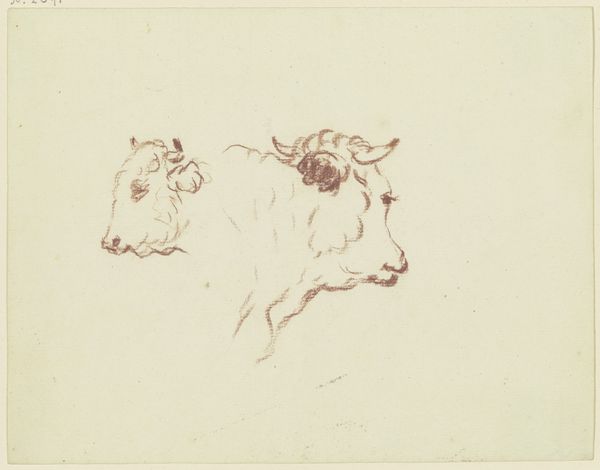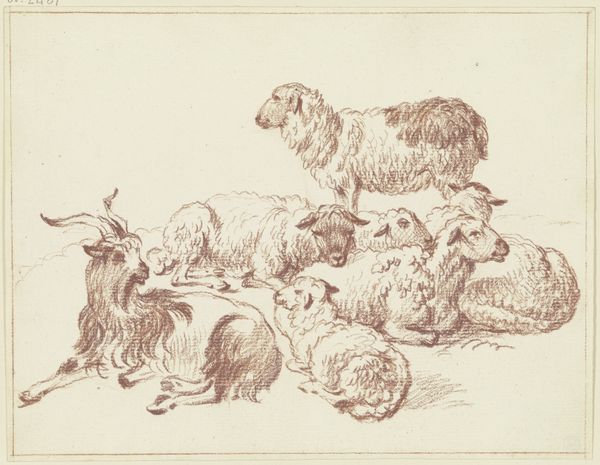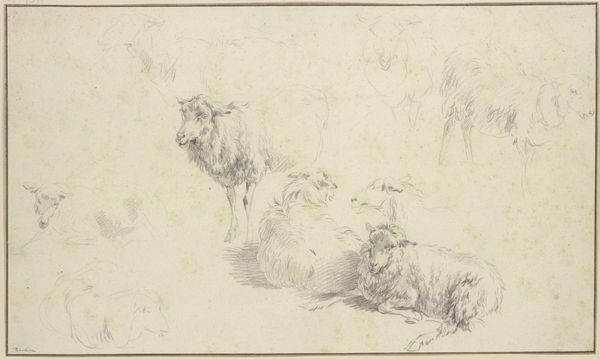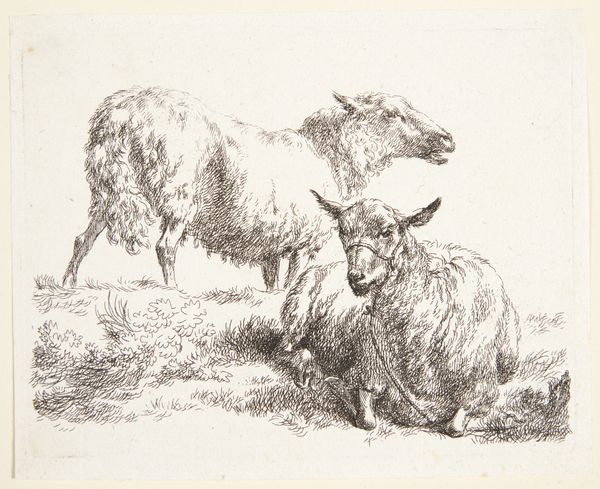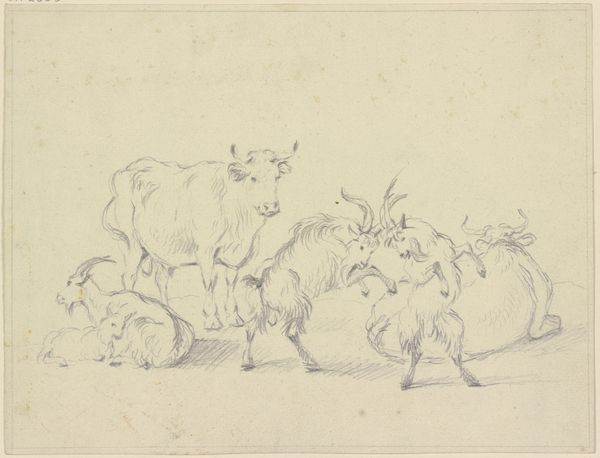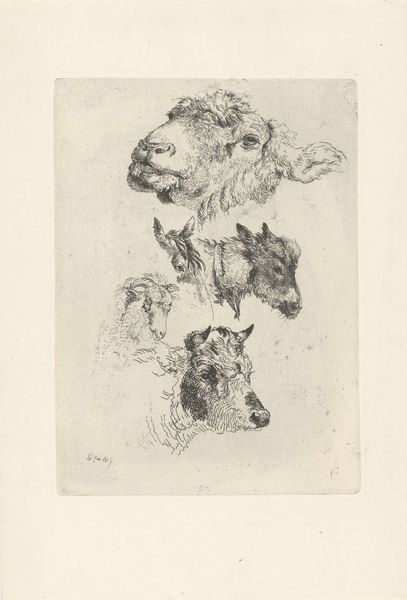
drawing, pencil, chalk
#
drawing
#
landscape
#
figuration
#
pencil
#
chalk
#
15_18th-century
Copyright: Public Domain
Curator: So, here we have “Cow and Ox with Two Calves,” an 18th-century drawing by Friedrich Wilhelm Hirt, currently residing in the Städel Museum. Editor: Right away, there’s this lovely domestic stillness to it, isn’t there? Like capturing a fleeting moment of peace in the pasture. I love how he suggests form with these delicate strokes, a softness almost. Curator: Absolutely. Hirt, though less known than some of his contemporaries, operated within a vibrant social and economic context shaped by the rise of agricultural societies and the early industrial revolution. These themes profoundly affected representations of nature and animals during his time. Editor: Mmm, so he's not just drawing cows; he's touching on broader cultural shifts, this human relationship to the pastoral ideal, even early capitalist drives? It’s all kinda hiding in plain sight isn’t it? I wonder, what choices are happening to present animals, cows, not some allegorical scene with some sort of god figure. Curator: Precisely. He places rural life and agriculture within these narratives, perhaps commenting on issues of social class, or even, gender, which at the time, was deeply entangled within ideas of property. The female cow takes centre stage here. How radical might that be? Editor: Oh, yes! I am immediately drawn in by the pencil. And the use of chalk must provide that diffused sense of light that radiates outwards from the figures... I am getting very Zen here. Did I ever tell you, I am originally from a dairy farm in Wisconsin! We spent many hours in nature with these beasts... and... wow this artist brings it all back. Curator: See! This is what is so powerful about approaching artwork in ways that incorporate our understanding of how it intersects across history. And, if we use the right theoretical framework, such as ecofeminism, for example, this is a profound piece offering counter-narratives on female reproductive labour. Editor: Yes. Thank you. You and Hirt have offered new lenses for me today. What seemed like an everyday farmyard is so deeply historical! It is lovely and now I’m kinda sad because I wish my dad could hear this conversation… Curator: Well, the drawing then, and the history, will continue to speak through all of us. Editor: Exactly, thank you! I want to grab a pencil and spend time looking...
Comments
No comments
Be the first to comment and join the conversation on the ultimate creative platform.
